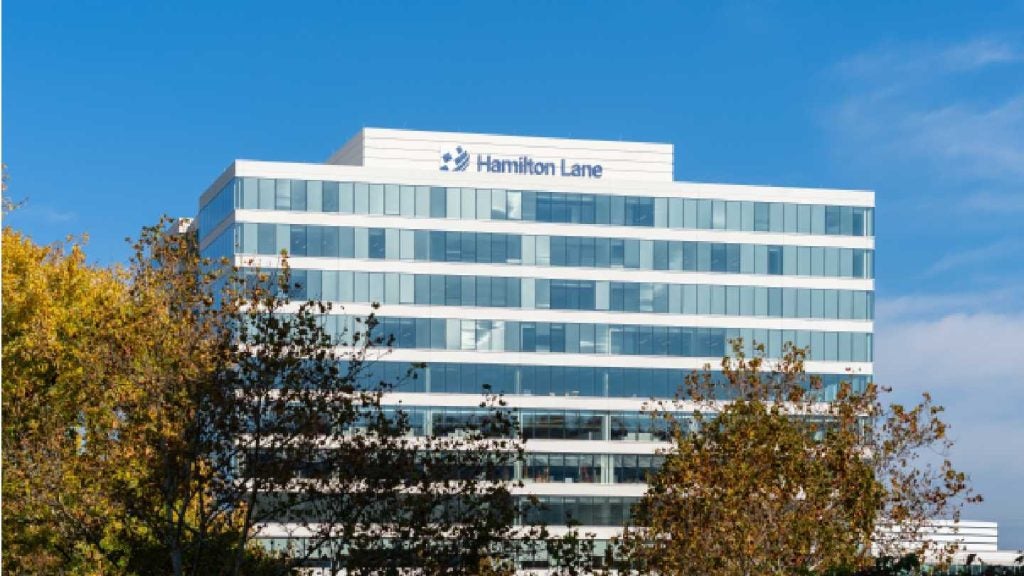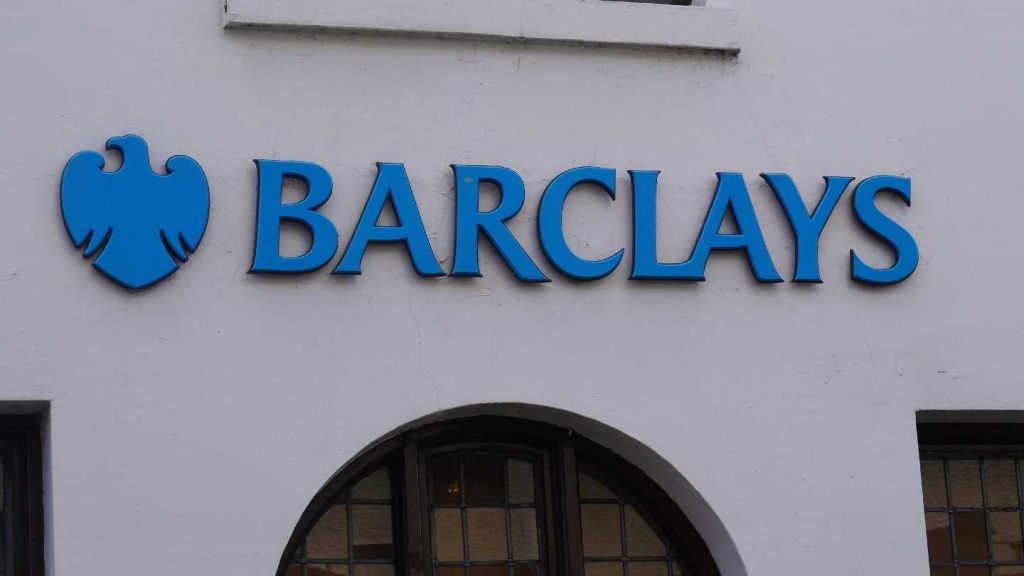It has been Samuel Pepys’, Thomas Gainsborough’s and Lord Byron’s bank. C. Hoare & Co. has recently made many changes, yet in essence it remains the same. In an exclusive interview, Hoare’s head of wealth management, Annamaria Koerling, explains to PBI’s Valentina Romeo how the private bank engineered its technology revamp while staying true to its values.
Annamaria Koerling has been lucky to oversee the wealth management business of C. Hoare & Co. during a period of big changes.
This is unquestionably true as in the last five years the bank has undergone one of the most profound modernisations since it was founded in the distant 1672.

Access deeper industry intelligence
Experience unmatched clarity with a single platform that combines unique data, AI, and human expertise.
Hoare’s, the oldest independently owned bank in the UK, has been investing in systems and people, combining financial planning and investment management under one roof, aiming to make the bank a front-line holistic wealth management provider.
An extensive technology upgrade has also flourished behind the scenes at the bank, in response to fast-changing market dynamics.
However, Koerling candidly admits, "We are not known for change, because to some extent we have always taken pride in our stability and in not changing. We are also not renowned for being early adopters of technology."
Koerling, Hoare’s multi-lingual head of wealth management, says the bank’s balance sheet expanded from £1.2 to £2 billion during the financial crisis, almost eliminating any need to make changes.
However, the bank recognised that some areas of the business needed a decisive make-over.

US Tariffs are shifting - will you react or anticipate?
Don’t let policy changes catch you off guard. Stay proactive with real-time data and expert analysis.
By GlobalData"My mandate, our mandate as a management team, was to re-position the bank and the brand as a credible wealth manager while preserving the good things, the culture, the banking, the service, the tradition, all of which set us apart from our competitors," she says.
Over the last 19 years Koerling has looked after discretionary portfolios for wealthy clients at Schroders, Cazenove and more recently Merrill Lynch, where she was responsible for the international discretionary portfolio management business in London.
In 2010 she was parachuted into C. Hoare& Co. and asked by the CEO of the bank, Jeremy Marshall, to develop the wealth management unit – relatively small at the time.
"The Partners wanted to diversify the revenue streams and develop the wealth management services so we could offer more to our clients.
"The Partners don’t have the aspiration to become a big bank and to look after thousands of customers. They’d like to look after a relatively small amount of customers and do a lot more for them," she says.
Technology marathon
In the last few years, Hoare’s has put in place more than 10 different technology solutions and is still running 20 projects, such as a new client relationship management system and a preliminary MiFID II assessment.
The implementation of a new risk management technology system four years ago has been the major catalyst of change, Koerling explains, as it represented a complete transformation in Hoare’s portfolio management systems.
Among the latest back-office developments, Hoare has also introduced Share Point, a platform replacing the ‘old internet’ storing the bank’s information in a more efficient way across the group.
"We found that putting in Share Point across the firm was a really interesting learning process for us. We made some mistakes, for example initially we made some processes too complicated and what we found was that people either didn’t do it, or they did things the ‘old way’. We learnt that, for change to be successful it needs to be easy for staff to implement and they need to see the benefits early on.
"You have to get people to rethink the way they work. The technology is the enabler, on its own it is not enough," she says.
With the wealth management industry adapting to a new playing field, Koerling is convinced that companies need to invest in technology just to stay in the game.
She says: "Our differentiator is that we get to know our clients well and offer them a highly personalised service. They trust us to act in their best interests. This can only be achieved if your front office staff has the right technology and the right level of operational support to make sure they can deliver that."
Even with the considerable resource available in the IT team, the bank also chooses to work with external providers where appropriate to enhance the service delivery to customers.
However, the challenges didn’t stop here.
"Even where we use external technology and outsourced solutions, they require a lot of maintenance and management of the supplier relationships. Technology solutions are also evolving quickly and you have to continue reassessing your requirements," she says.
Furthermore, to fill up the gap between the business and IT departments and ‘avoid things getting lost in translation’, in the last year Hoare’s has developed new analyst roles.
"Within IT, we have an IT architect who specialises in wealth management and we have a Relationship Manager within IT for our department and their job really is to understand what we need both strategically and operationally and to help us translate business requirements into IT solutions," Koerling explains.
The bank also hired a Wealth Management business manager to run several projects and make sure that there is sufficient user involvement in the testing phase.
Consistency does it
Hoare’s as a whole does not produce any products itself. It offers financial planning services alongside discretionary asset management.
The bank employs an ‘overlay’ framework that can accommodate a wide range of client needs, from growth to conservative capital conservation.
Koerling stresses the fact that without the new technology the bank wouldn’t have been able to take on as many new clients as it has in the last few years.
However, as they are an unlimited liability model, the bank is not looking to build a huge new business and acquire a large number of new clients. "The main focus is to continue to develop our proposition in response to our clients’ changing needs. Put simply we want to do more for our clients in a better way," Koerling says.
Hoare’s is currently managing a satisfying £1.7bn AuM that has been steadily growing at 20% year-on -year over the past five years, and at 40% in the past year (from £1.3bn as of June 2013).
Koerling also says the bank has managed to keep fairly consistent client profiles, which she finds reassuring.
Of the inflows coming in to Wealth Management, a third comes from existing clients, another third from customers who bank but don’t deal much with portfolio management, and another third is a brand new clientele, who mostly tend to have assets of £5 million plus to invest.
Traditionally, Hoare’s has insisted that a new client be introduced to the bank by existing customers. Koerling says the referrals route is still the best way to acquire new clients, either from their professional advisors or family members.
In addition, she says: "The awards we received have been very helpful to reposition the activities of the bank within the professional community. Many professionals knew our bank as a private bank but were less aware of us as a wealth manager."
Matching the statistics that say one in three wealthy people in London are UK residents non-dom, around 25% of Hoare’s new clients share this profile. Specifically, Hoare’s wealth management unit has created a team that specialises in offshore wealth, currently managing more than £200m and rapidly expanding.
As the bank revamped its digital offer, in particular internet banking facilities, it is not surprising that Hoare’s has also welcomed a mix of new tech-savvy entrants.
"You might think that, as we are a traditional bank, our clients are landed estates but actually the reality is something else," Koerling says. "Our services appeal to a broad range of people; the landed estates of course, but also wealthy entrepreneurs, new generation as well as a second generation, busy professionals, in fact anyone who values personal service and high quality, flexible solutions," she adds.
Commenting on the competition with the emerging online-only wealth managers, she says: "We certainly don’t aim to be the cheapest, but we do compete on the whole package. It is a combination of performance, service and price. Our clients value that combination. If somebody never wants to talk to their banker then it doesn’t make sense for them to bank with us."
Koerling, admittedly, sees technology and digitalisation as a prerequisite rather than a differentiator for Hoare’s. The bank has developed a digital strategy with great demand for its online and mobile banking offerings.
She says: "Clients can log into our website with their mobile or tablet, but we don’t have an app yet. That will be the next stage so clients can see pre-registered transactions, for example. Digital and mobile solutions will never replace our service, but they are definitely seen as an add-on for clients."
While Hoare’s clients see the benefit of mobile communication, they do not want to see their bank active in social media, which continues to get negative feedback from clients."
"If you are dealing with wealthy people they tend to keep a lower profile on social media anyway. Generally they tend to be very cautious about the information they put out about themselves as this makes them vulnerable to fraud.
"People sometimes ‘check in’ when they come into the bank, or use twitter during events. However, even if our clients use social media, they don’t want us to use it. That’s the feedback we got," Koerling says.
Measured evolution
Though Hoare’s expanded from 350 staff in 2013 to 400 as of 2014, the new technology deployment wasn’t as complex as it might be for a bigger organisation, Koerling says.
However, she admits that the challenge within any organisation is to keep changing and evolving, while preserving the core culture.
She says: "You can rush at change, you can do it too quickly. Companies are made of human beings and too much change can put them into a state of ‘fight or flight’. The risk is that they don’t know what to do anymore. Yesterday they were doing the job one way and today they are doing in a completely different way.
"Our bank has succeeded over the centuries precisely because we have responded to change and have adapted to changing environments."
She says keeping the culture intact also means getting the staff to ‘make the journey with you,’ and, especially because they don’t possess equity in the firm, staff retention is only possible by maintaining high motivation levels and preserving the sense of belonging.
Ultimately, Koerling says a big part of a wealth manager’s job is building a relationship of trust so that clients feel relaxed enough not to look at their portfolios every day.
She says: "Studies tell you that the more often you look at your portfolio, the more likely you are to make a bad decision, and the more likely you are to worry and maybe sell at first sign of trouble."
With the wealth management industry reaching an inflection point and deeply transforming its models, Koerling concludes: "Clients receive a lot of information and it is easy for them to lose sight of their longer term objectives. It is important to pick the right strategy and approach for your risk profile and personality.
"That is where discretionary management comes in, because you can build the right solution for your clients and help your clients achieve some emotional distance. If you can sleep at night and trust your wealth manager, you are more likely to stay invested and achieve the right outcome."







